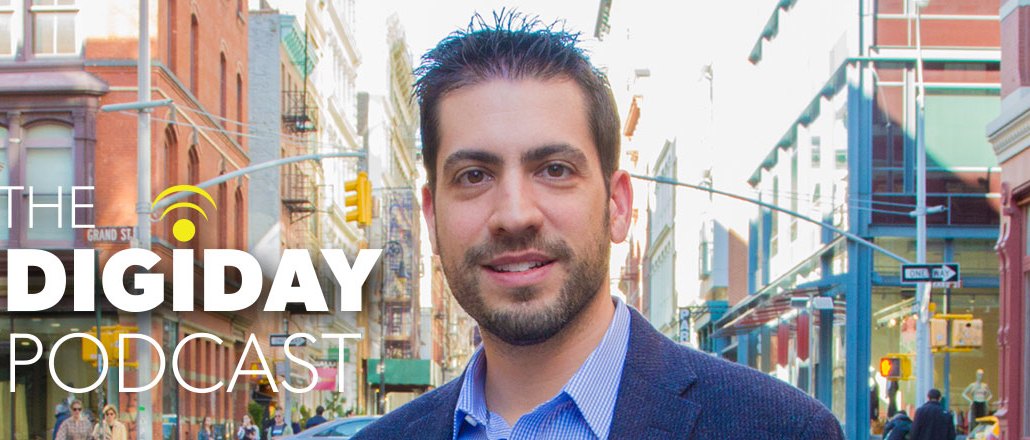‘Facebook is everything to us’: How Little Things grew to 50 million users in under three years

Subscribe: iTunes | Stitcher | RSS
Digital publishing in 2016 is an age of wonders. One can only guess what Gutenberg would make of a pet-food website turned publisher that amassed an audience of 51 million visitors in March, according to comScore, and 285 million video views a month in just two-and-a-half years.
That’s the story of Little Things, a feel-good site riding the Facebook wave to build a huge audience — and a profitable business expected to rake in $50 million this year. It now boasts an audience larger than the Time brand (Time, Fortune and Food & Wine) and the Los Angeles Times. It’s doing that with lifestyle content: lost puppies that were found; military families reunited; and, of course, food porn. Three quarters of its traffic comes from Facebook, according to Little Things.
“When you focus on the kind of content we’re producing in-house — this feel-good strain that’s very different from what you’d see on the nightly news — there’s a certain momentum that’s generated by our audience,” Little Things CEO Joe Speiser said on this week’s episode of the Digiday Podcast. “The chances of you sharing an ISIS beheading or a robbery or a plane crash are very low. But if you watch something that touches your heart and makes you feel something, you want to share that.”
As for distribution, Speiser puts it bluntly: “Facebook is everything to us.”
Depending on Facebook is a two-way street.
Most of Little Things traffic comes from Facebook. That’s, of course, a blessing and a curse. Facebook’s rise has made Little Things possible, Speiser readily admits. That’s remarkable. But it’s also risky, since a change in the algorithm could wipe out most of Little Things’ audience. Speiser’s willing to take that risk.
“I can’t imagine that changing because we’re adding true value to the ecosystem,” he said. “It’s not based on what I think or what Facebook thinks; it’s based on what the users think. They’re voting with their mouse or their finger. If they like it, they click like or comment; they engage. Facebook looks at time on site to make sure people are spending time interacting with the content.”
Little Things isn’t Upworthy 2.0.
It wasn’t long ago that Upworthy was being described at the fastest-growing publication in history. That came crashing down as its “curiosity gap” headlines fell out of favor with Facebook’s mysterious, ever-changing algorithm. Little Things will avoid that fate, Speiser said, in part because it is focused on creating original content, not aggregating — sorry curating — other people’s content. Little Things is now 65 percent original content, Speiser said, and hopes to move to over 80 percent by the end of the year.
“Facebook recognized you have too many publishers publishing the same exact YouTube video,” he said. “It became a problem in the News Feed. Now what happens is the first publisher who publishes content gets all the credit. The ones who have invested large sums of money into talent, into original video, into illustrations and recipes and all that, have done really well. Our traffic has gone up significantly.”
Being a Facebook publisher means following the algorithm.
Many publishers are in denial that their strategy is dictated by Facebook’s priorities. It’s not a coincidence that publishers are rushing to spin up video teams when Facebook is putting more video in its feed. See the rush to Facebook Live for this in action. Little Things has no qualms about its need to focus on what Facebook wants. If that means publishing through Instant Articles, it will do so. If that means live video, sure thing.
“As long as you constantly pivot to that, within the Facebook ecosystem, you’ll be fine,” Speiser said. “It’s scarier for the legacy brands that have built up these massive organizations with high costs around a magazine or a newspaper. The distributed model is interesting. We can produce content and format it for Snapchat or Pinterest or Instagram or Vine or Facebook. It gives us a lot more flexibility to reach a wider audience.”
Little Things was born out of an e-commerce company.
Little Things has an unusual backstory for a publisher. In 2010, Speiser was running an e-commerce company for pet food called PetFlow.com. Like any e-commerce player, PetFlow lived and breathed customer acquisition. It became quite good at creating content to find customers through Facebook. Looking at the slim margins of e-commerce, Speiser pivoted to focus on using that specialty in Facebook acquisition for a media business.
“We recognized we could use that competency to not just drive sales for PetFlow and drive it toward advertising,” he said. “That yielded much more margin.”
Little Things has 90 people and is profitable all with programmatic advertising.
There’s a fair bit of hand-wringing over whether programmatic advertising benefits publishers. Not at Little Things. The publisher has fully embraced programmatic to the degree that it’s only now hiring a small sales force. The publisher is a big proponent of header bidding.
“Most publishers don’t know how to leverage programmatic and header bidding properly to get to those premium, higher-paying CPMs,” he said. “Header bidding has really changed the game.”
More in Media

Earnings from social and search players signal that AI will be a long-play investment
Giants like Google, Meta and Microsoft say investors and advertisers might have to wait longer for AI to generate a better return on investment.

Why some publishers aren’t ready to monetize generative AI chatbots with ads yet
Monetization of generative AI chatbot experiences is slow going. Some publishing execs said they’re not ready to add advertising to these products until they scale or can build a subscription model first.

Media Briefing: Publishers who bet on events and franchises this year are reaping the rewards
Tentpole events and franchises are helping publishers lock in advertising revenue.





